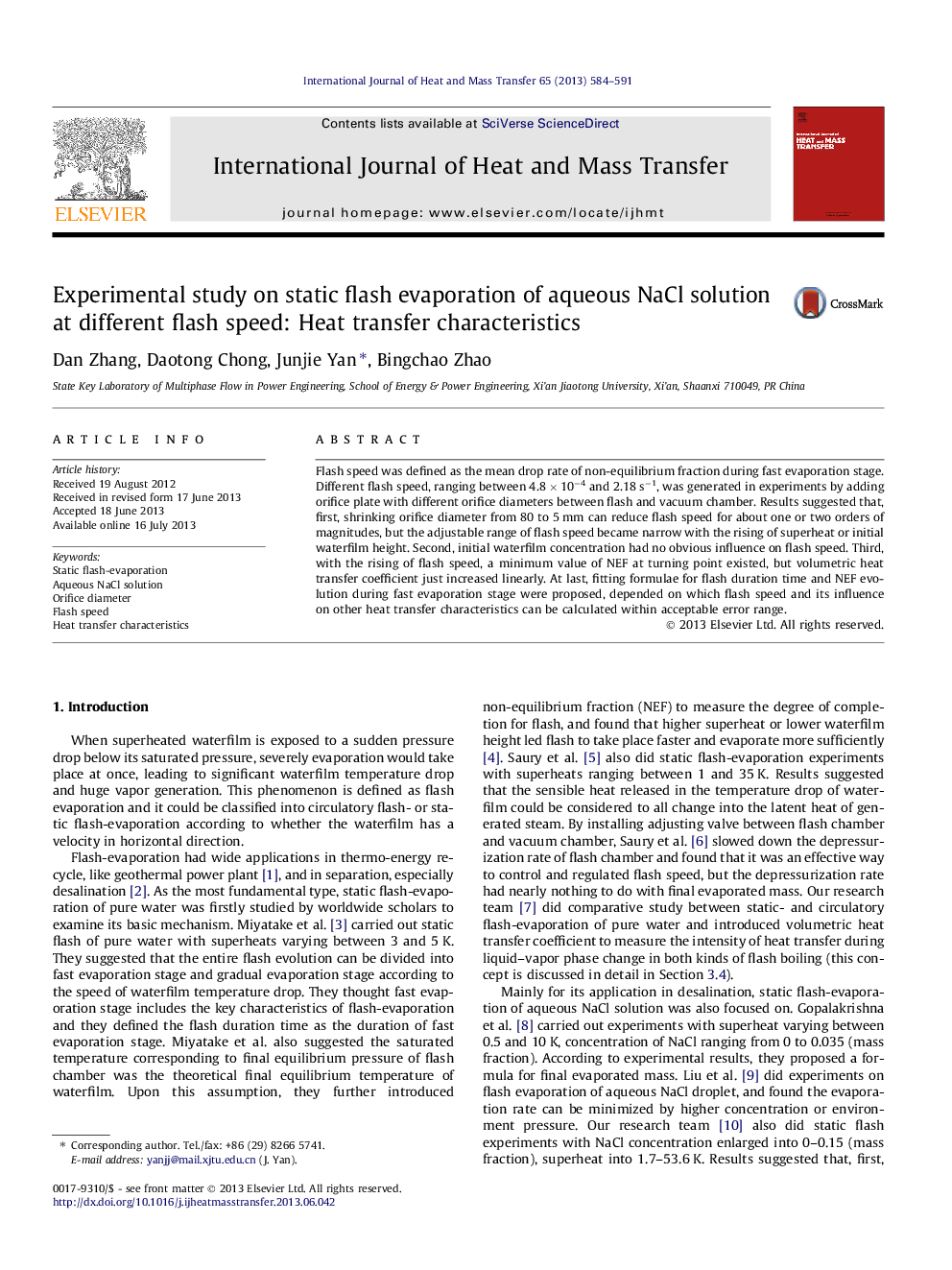| Article ID | Journal | Published Year | Pages | File Type |
|---|---|---|---|---|
| 7058652 | International Journal of Heat and Mass Transfer | 2013 | 8 Pages |
Abstract
Flash speed was defined as the mean drop rate of non-equilibrium fraction during fast evaporation stage. Different flash speed, ranging between 4.8Â ÃÂ 10â4 and 2.18Â sâ1, was generated in experiments by adding orifice plate with different orifice diameters between flash and vacuum chamber. Results suggested that, first, shrinking orifice diameter from 80 to 5Â mm can reduce flash speed for about one or two orders of magnitudes, but the adjustable range of flash speed became narrow with the rising of superheat or initial waterfilm height. Second, initial waterfilm concentration had no obvious influence on flash speed. Third, with the rising of flash speed, a minimum value of NEF at turning point existed, but volumetric heat transfer coefficient just increased linearly. At last, fitting formulae for flash duration time and NEF evolution during fast evaporation stage were proposed, depended on which flash speed and its influence on other heat transfer characteristics can be calculated within acceptable error range.
Related Topics
Physical Sciences and Engineering
Chemical Engineering
Fluid Flow and Transfer Processes
Authors
Dan Zhang, Daotong Chong, Junjie Yan, Bingchao Zhao,
